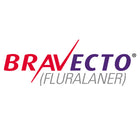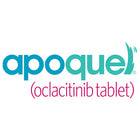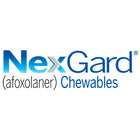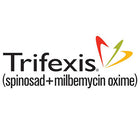Galapagos Magnolia Leaves for Tropical & Bioactive Habitats
Enhance your vivarium with Galapagos Magnolia Leaves, specifically designed to mimic natural forest floors, boost humidity, and promote a thriving ecosystem. These natural, dried leaves serve as ideal shelter, hiding spots, and a food source for microfauna, enriching both tropical and bioactive terrariums. They’re versatile enough for use in enclosures with amphibians, lizards, snakes, turtles, and invertebrates, providing a safe and effective way to recreate a natural habitat.
What Are the Benefits of Using Galapagos Magnolia Leaves in Terrariums?
- Naturalistic Habitat Recreation: Magnolia leaves replicate the forest floor, creating an authentic environment where amphibians, reptiles, and invertebrates feel secure.
- Humidity Retention: The leaves retain moisture, helping maintain higher humidity levels needed for tropical species.
- Microfauna Nourishment: They offer a natural food source and substrate for beneficial microorganisms, supporting a healthy ecosystem.
- Multi-Species Compatibility: Ideal for amphibians, reptiles (like snakes and lizards), aquatic and terrestrial turtles, tortoises, and various invertebrates.
- Low Maintenance: Easily cleanable and long-lasting, reducing the need for frequent replacements.
Directions for Use: How to Prepare Galapagos Magnolia Leaves?
- Rinse Thoroughly: Before placing in your terrarium, rinse the leaves to remove any dust or residue.
- Optional Sterilization: Although it isn’t required, boiling or baking the leaves briefly can further ensure purity if desired.
- Placement: Arrange a layer on the floor of the enclosure. For maximum effect, cover half the enclosure, allowing critters to use them as shelters or resting spots.
- Refresh as Needed: Replace leaves if they break down or show signs of mold in higher humidity setups.
Are There Any Precautions?
- Watch for Mold: In high-humidity tanks, check regularly to ensure no mold growth occurs.
- Animal Compatibility: While these leaves are safe for most reptiles, amphibians, and invertebrates, always confirm species-specific safety for sensitive pets.
Shipping & Returns
Shipping Policy: We offer all types of shipping options (Ground, Express, Priority, International) depending on the urgency of the product requirements. To know about our shipping policy in detail, click here.
Refund policy: If you face any issue with our product and want to return it, read our refund policy carefully.
FAQs - Galapagos Magnolia Leaves for Tropical & Bioactive Habitats
What is so special about Galapagos Magnolia Leaves?
Galapagos Magnolia Leaves are unique for their ability to simulate natural forest floors, providing essential humidity and shelter for tropical and bioactive habitats. They offer a safe, natural food source for microfauna and enhance the health of the terrarium ecosystem by supporting beneficial microorganisms. Their versatility makes them suitable for a range of species, from amphibians to reptiles and invertebrates.
Can Galapagos Magnolia Leaves help control odor in a terrarium?
Yes, the leaves can assist with odor control by supporting beneficial bacteria that break down organic waste. This creates a cleaner, healthier terrarium environment and reduces unpleasant smells, especially in enclosures with high-humidity species.
Do Magnolia leaves decompose quickly in terrariums?
Magnolia leaves are relatively slow to decompose compared to other leaf litters, making them a durable choice for terrariums. This slower decomposition rate means less frequent replacements and more stable, long-term habitat conditions for pets and microfauna.
Can these leaves be used in a bioactive vivarium?
Absolutely, Galapagos Magnolia Leaves are perfect for bioactive setups. They support the growth of microfauna, like springtails and isopods, which naturally break down waste, help maintain clean enclosures, and contribute to a thriving ecosystem.
Are Galapagos Magnolia Leaves safe for use with tarantulas?
Yes, these leaves are safe for tarantulas and can enhance the natural aesthetics of the habitat. They create a more enriching environment by providing cover, aiding humidity, and allowing beneficial microfauna to thrive, which supports a healthier setup.
How often should I replace Galapagos Magnolia Leaves in my terrarium?
Replace the leaves every few months or whenever they show signs of mold, excessive breakdown, or discoloration. In bioactive setups with microfauna, they may last longer as natural waste breakdown helps keep the leaves in good condition.
Can I use these leaves in desert habitats or enclosures?
Magnolia leaves are best suited for tropical and humid environments rather than arid habitats. In desert enclosures, they may break down too quickly and struggle to retain moisture, potentially attracting mold instead of serving their intended purpose.
Do Galapagos Magnolia Leaves affect water quality if placed in water features?
When used in small water features or shallow areas, these leaves release tannins that can tint the water but are generally safe for aquatic and semi-aquatic species. However, they’re best for terrestrial setups and may affect water clarity if submerged entirely.
Are there any alternatives to Galapagos Magnolia Leaves for terrariums?
Yes, popular alternatives include oak, almond, or Indian almond leaves, each offering unique benefits like tannins for pH balancing and antibacterial properties. However, Magnolia leaves are preferred for their durability and suitability across a range of pet habitats.
Will Galapagos Magnolia Leaves alter the pH of my terrarium?
Magnolia leaves can release tannins, which may slightly lower the pH over time, creating an environment closer to natural tropical habitats. This can benefit certain species, particularly amphibians and reptiles that thrive in slightly acidic conditions.
Recommended for the Galapagos Magnolia Leaves for Tropical & Bioactive Habitats (4 qt)
Product title
Vendor
£19.99 | £24.99
Product title
Vendor
£19.99 | £24.99
Product title
Vendor
£19.99 | £24.99
Product title
Vendor




















